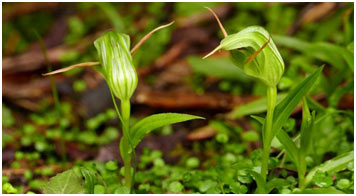Bentham and Hooker Classification System
George Bentham and Joseph Dalton Hooker proposed this classification system. This was a natural system.
Natural Classification: The classification system which is based on a set of characteristics for grouping similar plants is called a natural system. Various plants are grouped purely on the basis of morphological similarities. Plants share many natural affinities.
The classification system of Bentham and Hooker was the non-phylogenetic system. This system was published between 1862 and 1883 in Genera Plantarum. They divided seed plants into 202 orders.
This classification system was chiefly based on De Condole but has slight modifications. Flowering plants are divided on the basis of simple and constant superficial characters such as reproductive and morphological characters. But many floral characters were neglected.
Scheme of Bentham and Hooker Classification System
The plants are divided into two major groups. Each group has sub-groups. Each subgroup is divided into divisions. Each division is divided into series. Each series is further divided into cohorts. And finally, each cohort is divided into many orders.
According to this classification system, all seed plants were classified into three classes, three sub-classes, twenty-one series, twenty-five cohorts, and 202 orders. Spermatophytes (seed plants) are divided into dicotyledons, gymnosperms, and monocotyledons.
The origin of angiosperms is not given. Similarly, the position of the gymnosperm is not defined. It is placed between dicotyledons and monocotyledons. Dicotyledons are placed before monocotyledons. Therefore, considered to be more primitive than monocotyledons.
Group I: Angiospermae
In angiosperms, the ovule is enclosed in the ovary. These are flowering plants and pollination occurs between them. It has two subgroups.
A. Sub-group Dicotyledons
These are herbs, shrubs, and trees. The stem has a central pith. The activity of the stem is increased by cambium. They have reticulate veins. Their embryos contain two cotyledons. This sub-group is divided into the following divisions.
1. Division Polypetalae
Calyx corolla present. They have free petals. This division contains three series, 5 cohorts, and 33 orders. The series are Thalamiflorae, Disciflorae and Calyciflorae.
2. Division Gamopetalae
Their flowers have fused calyx and corolla in them. Few stamens are present which are attached to the corolla. This division has 3 series, 10 cohorts, and 42 orders. The series are: Inferae, Heteromerae and Bicarpellatae.
3. Division Monochlamydeae
This division contains mostly unisexual flowers. They form the perianth. It has 6 series and 33 orders.
B. Sub-group Monocotyledonous
They are mostly herbs. Stems in them are without pith. Cambium is not present. Vascular bundles are scattered in the cortex. The leaves have parallel venation. Their embryos contain only one cotyledon. This subgroup has no division instead seven series are present. This series includes 34 orders.
Following are the series of sub-group monocotyledonous:
- Series Microspermea
- Series Coronariceae
- Series Calycinaeae
- Series Nudiflorae
- Series Apocarpae
- Series Glumaceae
- Series Epigynae
Group II: Gymnospermae
They are shrubs or trees. The trees are resinous. The stem has a central pith. Vascular bundles are present in rings. Secondary growth takes place due to the activity of the cambium. Leaves are needle-like. They form cones. Ovule is naked and is not enclosed in an ovary. Pollination occurs through direct contact. It has three orders:
- Order Gnetaceae
- Order Coniferae
- Order Cycadacee
Merits of Bentham and Hooker Classification System
- It is based on natural classification so changed the artificial classification system.
- It differentiates between seed-producing and non-seed-producing plants.
- It mostly deals with angiosperms (flowering plants).
- It covers a large number of plants.
- The criteria for this classification system are vegetative characteristics such as the presence of pith, cambium, leave venation, etc.
- This system greater emphasizes fused and free petals.
Demerits of Bentham and Hooker Classification System
- This system fails to provide the concept of phylogenetic relationships. In that way, it is only the modified form of the Linnaeus Classification System.
- The position of Gymnosperms between Dicots and Monocots is only for convenience. It is not for affinities between these groups.
- It is based mainly on single and mostly artificial characters. Thus, closely related families are widely separated from each other.

